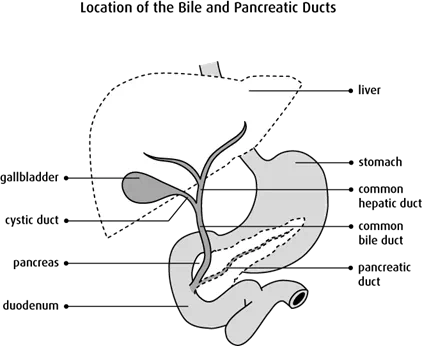What is bile duct cancer?
Bile duct cancer starts in the cells of the bile duct. A cancerous (malignant) tumour is a group of cancer cells that can grow into and destroy nearby tissue. It can also spread (metastasize) to other parts of the body.

The bile ducts are part of the digestive system. Bile is a yellow-green fluid that helps your body digest fats. The bile ducts are tubes that carry bile from the liver to the first part of the small intestine (duodenum).
Cells in the bile ducts sometimes change and no longer grow or behave normally. These changes may lead to non-cancerous (benign) conditions such as bile stones or inflammation of the gallbladder (cholecystitis). They can also lead to non-cancerous tumours such as bile duct adenoma.
But in some cases, changes to bile duct cells can cause bile duct cancer. Most often, bile duct cancer starts in the cells of the inner lining (epithelium) of the bile duct. This type of cancer is called cholangiocarcinoma. The most common type of cholangiocarcinoma starts in the gland cells of the lining and is called adenocarcinoma of the bile duct.
Bile duct cancers are divided into 2 main groups based on where they start – either in the part of the bile duct outside the liver (extrahepatic) or in the part inside the liver (intrahepatic).
Rare types of bile duct cancer can also develop. These include sarcoma and lymphoma.
